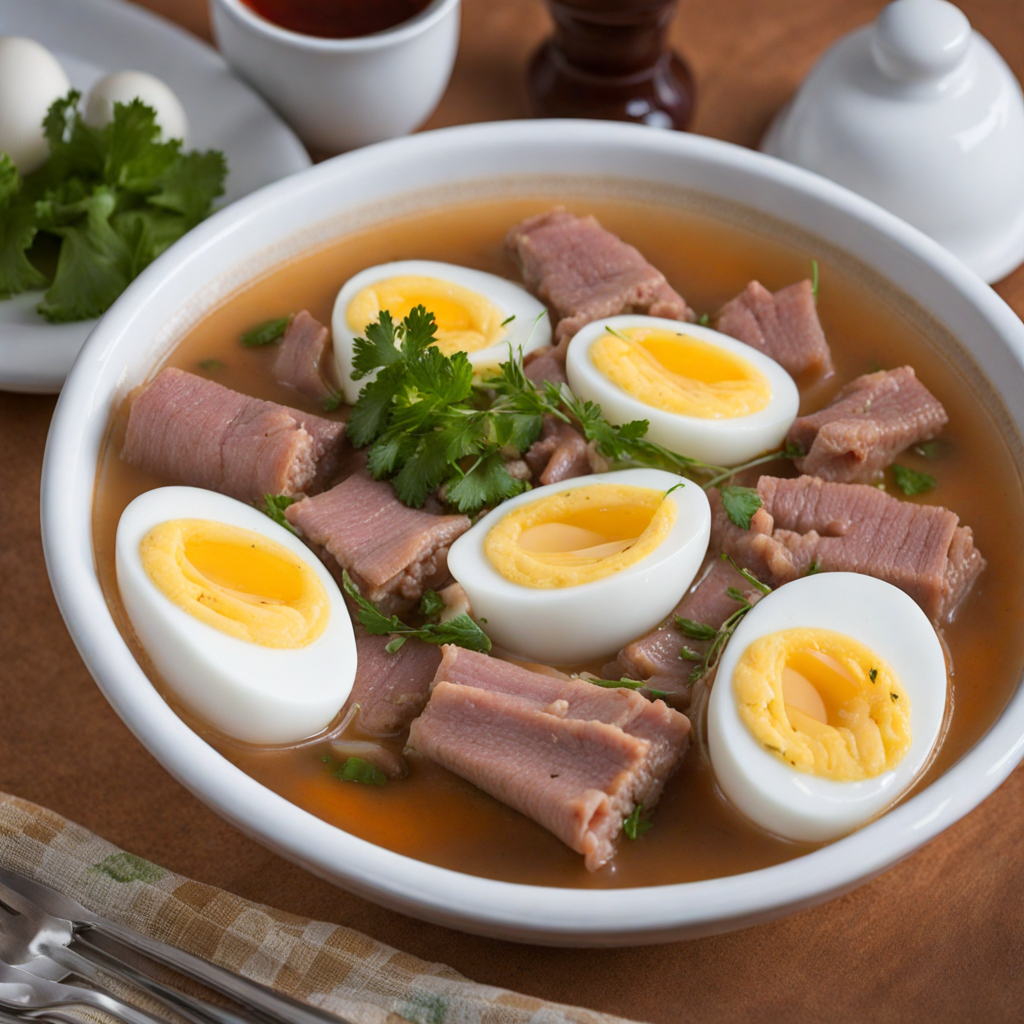Choripán
Choripán is a beloved Argentine street food that perfectly captures the essence of the country's vibrant culinary culture. This simple yet flavorful dish consists of a grilled chorizo sausage, typically made from a mix of pork and beef, served in a crusty bread roll. The sausage is cooked over an open flame, allowing the smoky flavors to develop while keeping the inside juicy and tender. The combination of the savory sausage and the warm, chewy bread creates a satisfying bite that is both hearty and comforting. The beauty of choripán lies in its versatility, as it can be customized with a variety of toppings and condiments. Traditional accompaniments include chimichurri, a zesty sauce made from parsley, garlic, vinegar, and olive oil, which adds a fresh, herbaceous kick that elevates the dish. Other popular toppings might include spicy salsas, pickled onions, or even a drizzle of mustard, allowing each bite to explode with contrasting flavors and textures. Whether enjoyed at a street vendor or a backyard barbecue, choripán is a dish that invites personalization and experimentation. Choripán is more than just a meal; it’s a social experience that reflects the Argentine way of life. Often enjoyed during asados (barbecues) or at outdoor gatherings, this dish brings people together, creating a sense of community and celebration. The aroma of grilling sausages fills the air, drawing friends and family to share in the enjoyment of good food and great company. With its rich flavors and cultural significance, choripán is a delightful introduction to the diverse and delicious world of Argentine cuisine.
How It Became This Dish
Origins of Choripán The Choripán, a beloved Argentine street food, is a simple yet delicious sandwich made with chorizo (a type of sausage) served in a crusty bread, typically a baguette or a roll. Its name derives from the combination of "chorizo" and "pan," which means "bread" in Spanish. The origins of choripán are deeply rooted in the culinary traditions of the gauchos, the legendary cowboys of the Pampas region, who relied on the abundant cattle and pork available in the vast grasslands of Argentina. The practice of grilling meats over an open flame, known as asado, is central to Argentine culture, and the choripán is an extension of this tradition. The gauchos would often prepare chorizos from the pigs they raised, seasoning them with local herbs and spices, and then grill them over a fire. The combination of the smoky, spicy sausage with fresh bread made for a hearty meal that was easy to prepare and eat while working in the fields. Over time, this humble dish evolved into a popular street food, enjoyed by all social classes in Argentina. \n\n Cultural Significance Choripán holds a special place in Argentine culture, often associated with social gatherings and celebrations. It is commonly enjoyed at asados, football matches, and public festivals. In fact, it has become a symbol of Argentine identity, representing the country's rich culinary heritage and communal spirit. The simplicity and accessibility of choripán make it a favorite among locals and visitors alike, transcending socioeconomic barriers. The dish is also often accompanied by chimichurri, a vibrant sauce made from parsley, garlic, vinegar, and olive oil, adding depth and flavor to the choripán. This condiment, like the sandwich itself, has become synonymous with Argentine cuisine and is used generously on various grilled meats. The combination of choripán and chimichurri is a testament to the Argentine palate, which favors bold flavors and fresh ingredients. \n\n Regional Variations While the basic concept of choripán remains consistent, regional variations have emerged throughout Argentina. In Buenos Aires, the capital, vendors sell choripán from street carts, often with a variety of toppings, including grilled peppers, onions, and even cheese. In contrast, in the northern provinces, choripán may be served with a spicier version of chimichurri, incorporating local spices and flavors that reflect the region's culinary influences. In the southern regions, particularly Patagonia, the use of different types of chorizo, such as cordero (lamb), is more prevalent. This variation highlights the diversity of Argentina's landscapes and the ingredients that are locally available. As choripán continues to evolve, it remains a versatile dish that adapts to regional tastes while retaining its core identity. \n\n Choripán in Modern Times In recent years, choripán has gained international recognition, appearing on menus in restaurants around the world. Chefs have begun to experiment with the traditional recipe, incorporating gourmet ingredients and modern cooking techniques. This evolution is indicative of a broader trend in which traditional foods are reimagined to appeal to contemporary palates, while still honoring their origins. Food festivals and markets in Argentina frequently feature choripán as a star attraction, showcasing its versatility and popularity. Local chefs often participate in choripán competitions, where they seek to create the ultimate version of this classic dish. Such events celebrate not only the food itself but also the culture surrounding it, fostering a sense of community and pride in Argentine culinary traditions. \n\n Choripán Beyond Argentina As Argentine cuisine gains prominence on the global stage, choripán has found its way into the hearts and stomachs of food lovers beyond Argentina. In countries with significant Argentine immigrant populations, such as the United States and Spain, choripán stalls and restaurants have emerged, offering authentic versions of this traditional dish. Moreover, food trucks and pop-up eateries specializing in Latin American cuisine have embraced choripán, introducing it to new audiences. The sandwich's simplicity allows for creativity in presentation and preparation, making it a favorite among food enthusiasts looking to experience the flavors of Argentina. \n\n The Future of Choripán Looking ahead, the future of choripán seems bright as it continues to adapt and thrive in a rapidly changing culinary landscape. As more people become interested in international cuisines, the demand for traditional Argentine foods like choripán is likely to grow. This presents an opportunity for chefs and food artisans to innovate while respecting the dish's rich heritage. Additionally, as sustainability becomes an increasingly important concern in the food industry, there is potential for choripán to incorporate locally sourced, organic ingredients. This shift could further connect the dish to its agricultural roots, emphasizing the importance of supporting local farmers and producers. \n\n In conclusion, choripán is more than just a sandwich; it's a reflection of Argentine culture, history, and community. From its gaucho origins to its modern iterations, this dish embodies the spirit of Argentina, showcasing the country's love for grilled meats, hearty flavors, and communal dining. As choripán continues to evolve and gain recognition around the world, it serves as a delicious reminder of the power of food to connect people across cultures and generations.
You may like
Discover local flavors from Argentina







